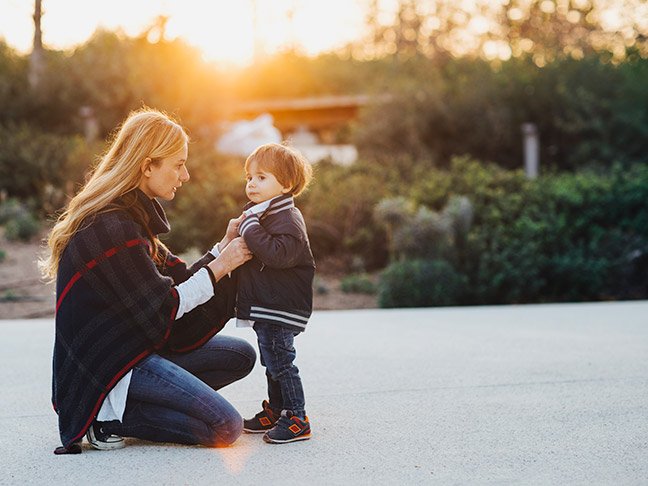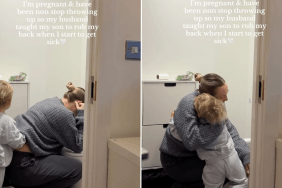A mom of three young children reached out to me to learn how to implement positive parenting. She told me that she yells when she’s frustrated. She explained that she does deep breathing to stay calm, and that works for a while, but eventually, she feels herself losing control of her calm, and that’s when the yelling starts. She doesn’t want her kids to remember her as a yeller, as she remembers the discipline style of her own mom, but she doesn’t know how to shift her parenting. She feels stuck.
This is a story I hear over and over again from parents. There’s a lot of talk about tapping into positive parenting, but how do you actually do that in the heat of the moment? What does a “positive parent” do when a toddler is throwing sand at another child at the playground or dumping his meal on the floor for the third time in one day?
The truth is that positive parenting doesn’t include a comprehensive list of do’s and don’ts to target every possible sticky parenting situation, it’s more of a daily practice that begins with building a strong connection and helps kids internalize the positive messages parents instill. No, that doesn’t mean avoiding all corrections and redirections. Kids need guidance and boundaries in their lives. However, in connecting first, kids hear an important message: I love you anyway. You might not think that message needs daily attention, but it does. Little kids experience huge emotional shifts, and they often interpret yelling or harsh discipline as being loved just a little bit less.
Try these four positive parenting strategies to improve your parent-child interactions in your home.
Use your own emotional thermometer. A great way to help kids visualize how they’re feeling when the chips are down is to use a feelings thermometer. By asking kids to color in how hot they feel when they’re angry or upset, they can see how their emotions affect the physical sensations in their bodies. This is a great strategy for adults to use, as well.
It’s perfectly natural to experience emotional reactions to the behavior exhibited by your kids. We feel embarrassed when tantrums occur in public. We feel frustrated when kids don’t listen to us or challenge us in difficult moments. It’s important for parents to take their own temperature first and assess why they’re feeling reactive in the moment. Regulate your own emotions first.
Connect and empathize first, then redirect and set limits. Kids act up when they’re in a compromised state. They don’t always communicate that they need connection and attention in a clear manner, but that’s what they need to calm down and work through something stressful.
Reestablish your connection with your child and take a moment to empathize. If your child dumps her dinner, for example, you might start with bending down to your child’s eye level and saying, “It looks like you’re exhausted, and this dinner isn’t what you wanted. I know what that feels like.”
Next, move on to the limit and redirect. “We don’t dump our food in this family, but we can speak up. Tell me what you do like on this plate, and we can start there.” This is a good time to talk about your dinner expectations. If eating some protein, something green, and something red is your expectation, say that while making the plate a little smaller. If your child is still hungry after eating a small plate, add more.
Look beneath the surface. Kids tend to cry out for help when they are exhausted, frustrated, anxious, hungry, or overwhelmed. Think of the negative behaviors exhibited by your child as the tip of the iceberg. Your job is to look beneath the surface to find out what emotions or circumstances are triggering those behaviors. It helps to actually sit down and draw and iceberg and ask your child to help you fill it in. This helps parents understand the triggers and helps kids learn to verbalize their feelings.
Create manageable routines and clear expectations. Kids thrive when they have predictable routines, age-appropriate expectations, and their basic needs are prioritized. They need plenty of time to play. They need time to connect with their parents. They need to eat at regular intervals, and they need a consistent sleep routine. While all of this sounds simple, it can feel difficult to manage when life gets busy.
One of the best ways to focus on positive parenting is to slow down and prioritize relationships over stuff and activities. Parents often get caught up in wanting to provide opportunities by signing even very young children up for tons of activities, but kids don’t need busy schedules and tons of stuff. They need playtime, downtime, and connection time. When parents slow down, kids figure out who they are and what they like to do on their own. This makes for a happier home.
Photo: Getty
More on behavior and discipline:
Why Spanking Is Never Okay, According to a Pediatrician








